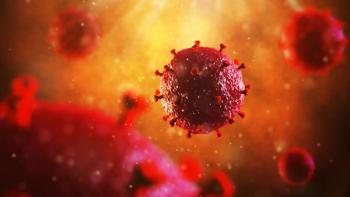
Earlier HIV Care Linked to Faster Viral Suppression
Treatment for HIV infection initiated within 3 months of diagnosis can shorten time to viral suppression, a new study finds.
An estimated 1.1 million people are HIV-infected in the United States and approximately 200,000 are unaware of their infection status and not receiving treatment.1 Even among patients with diagnosed HIV infection, an estimated 20% do not receive medical care.2 These numbers persist despite the fact that suppression of HIV viral load is proved to reduce HIV-related morbidity and mortality and can reduce transmission of the virus.3
A
This large population-based study, which uses national HIV surveillance data, provides empirical support for the importance of early linkage to care following an HIV diagnosis. It also demonstrates that more care visits early on after diagnosis are associated with a faster time to viral suppression.4
Take-home message:
Physicians who see patients with newly diagnosed HIV infection should encourage timely linkage to care and emphasize the importance of early follow-up visits in achieving rapid viral suppression.
References:
- Centers for Disease Control and Prevention. Monitoring selected national HIV prevention and care objectives by using HIV surveillance data-United States and 6 U.S. dependent areas–2010. HIV Surveillance Supplemental Report 17 (No. 3, part A). Available at:
http://www.cdc.gov/hiv/topics/surveillanâce/resources/reports . Accessed March 11, 2014. - Hall HI, Gray Mahle K, Tang T, et al. Retention in care of adults and adolescents living with HIV in 13 U.S. areas. J Acquir Immune Defic Syndr. 2012;60:77–82. doi:
10.1097/qai.0b013e318249fe90. - Cohen MS, Chen YQ, McCauley M, et al. Prevention of HIV-1 infection with early antiretroviral therapy. N Engl J Med. 2011;365:493–505. doi:
10.1056/NEJMoa1105243 . - Hall HI, Tang T, Westfall AO, Mugavero MJ. HIV care visits and time to viral suppression, 19 U.S. jurisdictions, and implications for treatment, prevention and the national HIV/AIDS strategy. PLoS One. 2013 Dec 31;8:e84318. doi:
10.1371/journal.pone.0084318.eCollection 2013.
Newsletter
Enhance your clinical practice with the Patient Care newsletter, offering the latest evidence-based guidelines, diagnostic insights, and treatment strategies for primary care physicians.


















































































































































































































































































